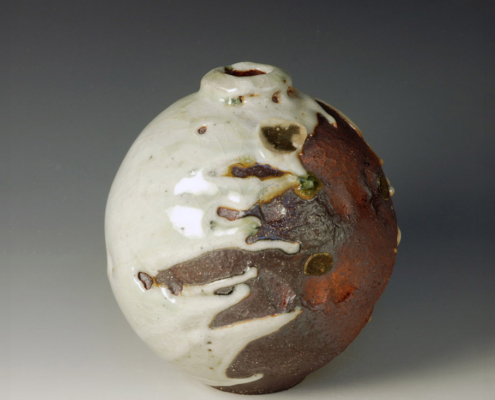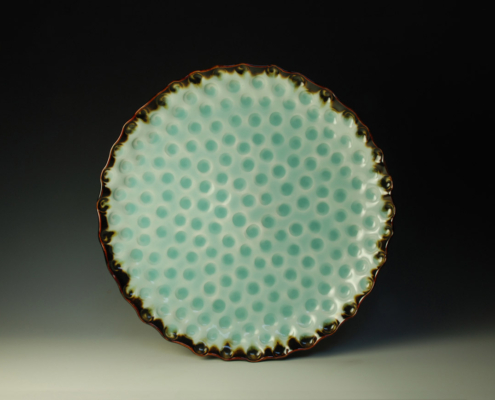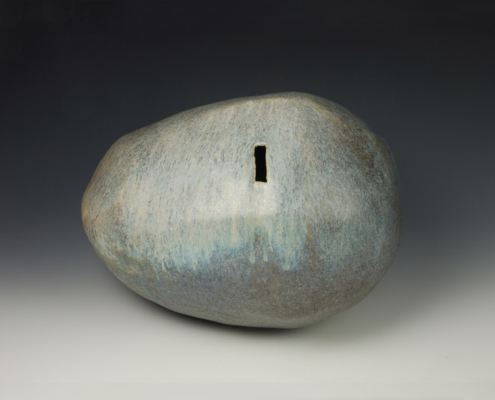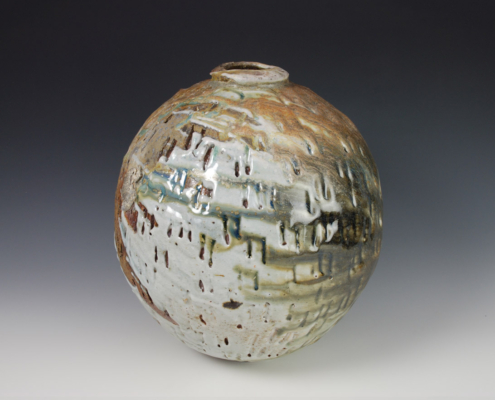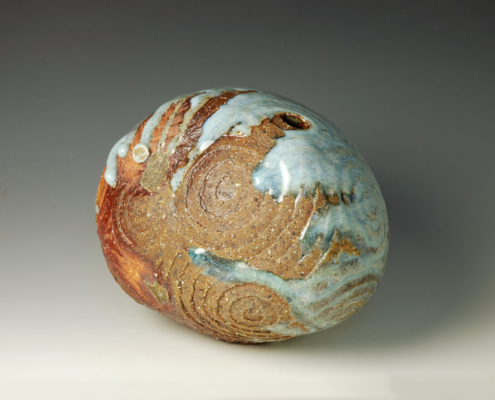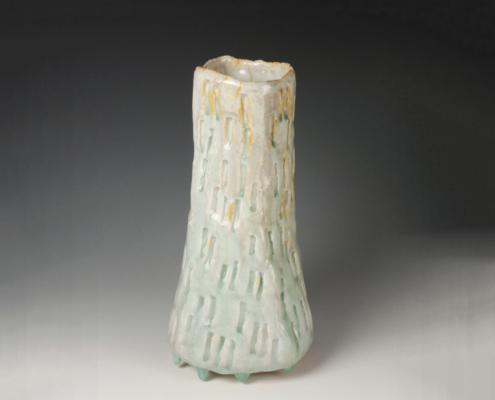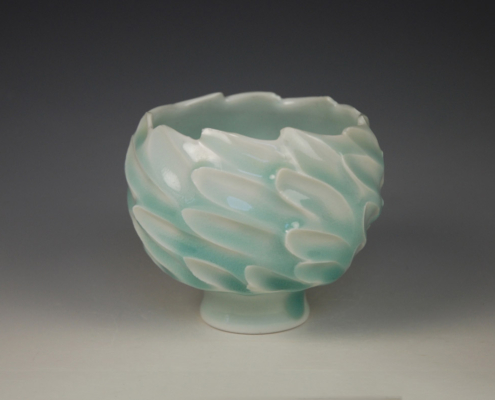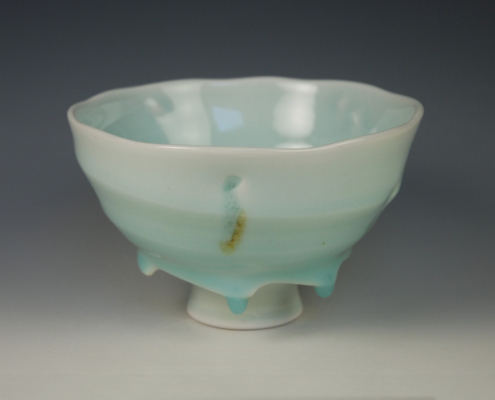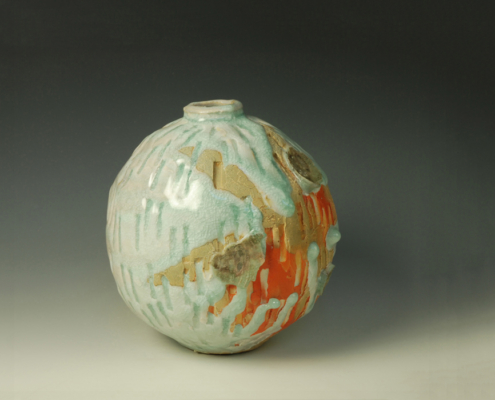Matthew Blakely
Ceramic Landscapes
28 March – 7 May 2015
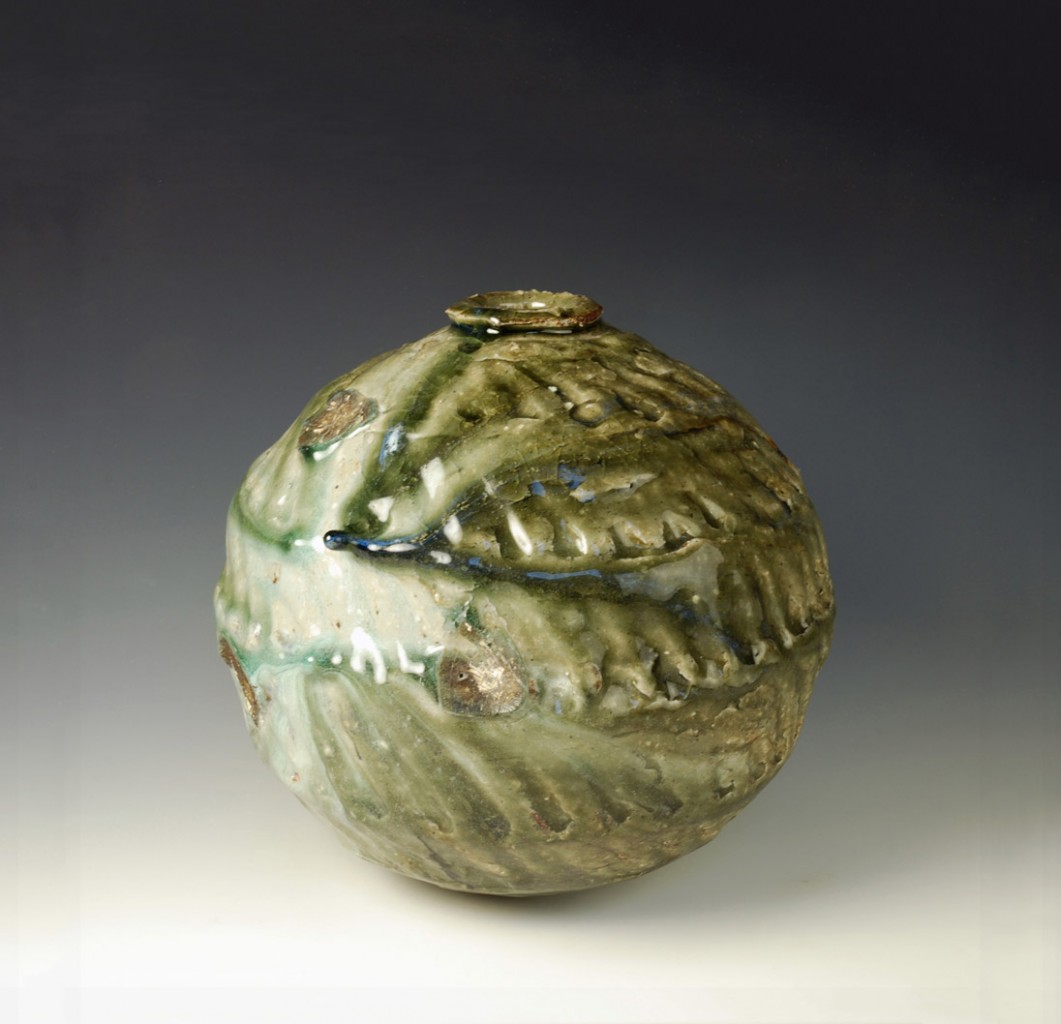
Matthew Blakely, Dartmoor Granite Sphere, argile et roches de Dartmoor, h. 26 cm.
Born in Great Britain, Matthew Blakely emigrated to Australia in 1988 where he studied ceramics and obtained the Sydney National School of Art medal. He rapidly made a name for himself with his work on porcelain with its rich blue-green celadon glazes reminiscent of the pure and invigorating freshness of the Australian sea. In 2002, he returned to the UK and created a new workshop where he built 3 kilns, one a wood-burning kiln in which he fires all his pieces. More and more his work represents the personal development of his understanding and close link with the country-side of Great Britain. Indeed Matthew Blakely creates his own glazes from rock, earth and ash collected from different regions of England. In this respect, his approach and search for new glazes could be likened to that of Daniel de Montmollin of France.
In London in 2011, Matthew Blakely‘s work was awarded the prestigious “Art’s Council England” prize. The Galerie de l’Ancienne Poste devotes a personal exhibition to him – his first in France.
‟Of all the arts, ceramics is the most fundamentally linked to the physical make up of the planet that we inhabit and best illustrâtes the link between science and art. It can be seen as an artistic expression of the geology of earth. Pots represent our Relationship with and dependency on the planet, making things for human use from the dug earth beneath our feet. This work represents the personal development of an understanding and a bond with the landscapes of Britain, illustrating the ceramic qualities of the rocks and deposits around the country. My aim is to create another way of looking at the land on which we live by making ceramic pieces that are entirely created from rocks and minerals that I have collected from individual locations. Each piece will therefore be an illustration of the ceramic and geological character of that place. The materials I am using are unrefined, impure and therefore full of unpredictability, and therefore possibility. Thanks to these variations and impurities I have been able to achieve qualities that would be impossible to get in any other way. That is what makes this work unique.”
Matthew Blakely

